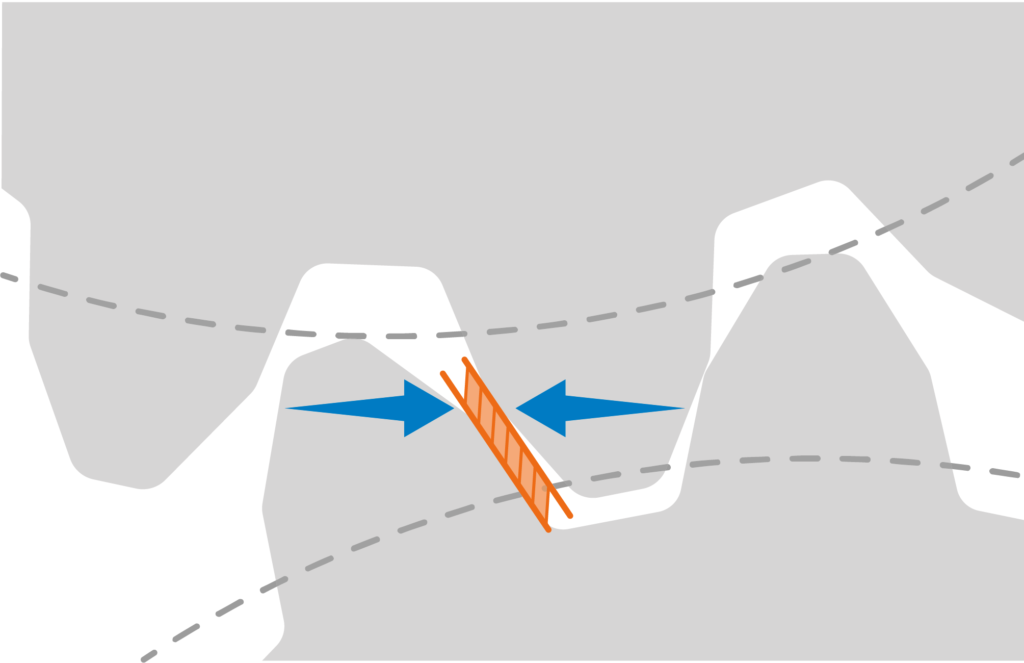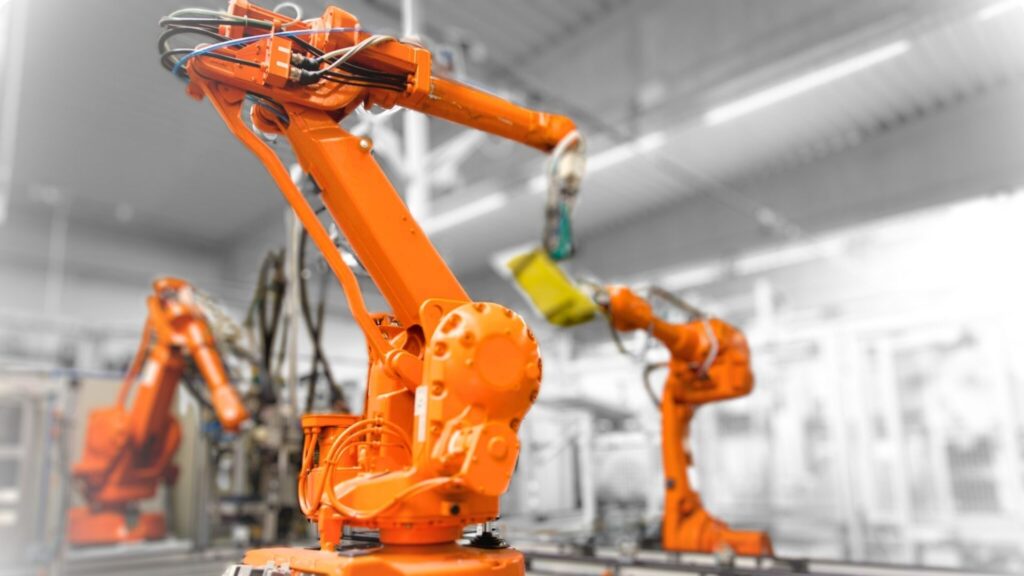Eliminating Backlash in Mechatronic applications Without Compromises
Backlash can have a significant impact on the accuracy, repeatability, and efficiency of a mechanical system, which can be particularly detrimental in high-precision mechatronic applications. It can also pose significant challenges when it comes to controlling a system, and the noise it generates proves to be a challenge for people-centric working environments. There are a few ways to reduce its effects, however, they don’t fully eliminate it, not to mention they each have drawbacks. Nonetheless, all hope is not lost, as we will examine a new way to fully eliminate backlash by tackling it at its main source – the transmission drive.
What is backlash?
Backlash (also called slop, play, or free-play) refers to the amount of movement between two mating gears or components, occurring when the driving members is not directly connected to the load (Fig. 1). When a force F is applied to move the free-floating mass m, but the components are not in constant direct contact backlash can occur between the components.


Backlash most commonly occurs due to the distance between the teeth of engaging gears (Fig. 2) in the case of bidirectional movement in the system.


Backlash is one of the factors of lost motion, even though they are often erroneously used interchangeably. Lost motion is the amount of movement that is lost due to the clearance between parts, or the angle of movement in both directions where a load is applied at the output, without a corresponding movement at the input (Fig. 3) (Tang, 2020).


Why does backlash occur?
Manufacturing gears is not a perfect process, with small deviations appearing during the production, which can add up to a larger deviation in a system with several gear stages. Environmental factors also come into play once the gears are in use, with thermal changes or impurities affecting the precision of the system.
Generally, some space also needs to be present between the gears to ensure the system can run without too much friction and to allow space for lubrication and thermal expansion (Eliana Giovannitti, 2022). Excessive friction reduces efficiency and creates unwanted noise, and the vibrations created impose a challenge on controllability. Having to consider both needing to reduce friction by leaving space between working parts, and trying to minimize inefficiencies leaves a small window for a local optimum scenario.
Backlash issues in Delta robots
Attempts to reduce backlash
True zero-backlash speed reducer

Backlash is “one of the most important nonlinearities that limit the performance of speed and position control in industrial, robotics, automotive, automation, and other applications”.
G. A. Ambaye (2021)
The design of the Archimedes Drive eliminates backlash through the use of constant tractive rolling contact. The operation can run without any vibrations from backlash impact, lowering the jerk significantly, and making it much easier to control the system. Because the traction rollers have smooth contact, there is no clearance between parts. This means that all the movement is transferred from the motor to the output application with an efficiency of over 90%. Furthermore, the tractive contact as opposed to using meshing gears makes the Archimedes Drive more efficient, precise, and quiet than traditional speed reducers, leading to improved overall lifetime and system performance.
This is especially beneficial in high-speed Delta robots and high-precision applications, such as electronics, aerospace, or medical devices, where even small amounts of backlash can have a significant impact on accuracy and performance. By eliminating these factors, the Archimedes Drive can help improve the performance and repeatability of these systems.
References:
- Ambaye, G. A. (2021). The Performance of Gear with Backlash: A Review. Journal of Applied Mechanical Engineering. https://www.walshmedicalmedia.com/open-access/the-performance-of-gear-with-backlash-a-review-87208.html
- Bright Hub Engineering. (2022). Anti (Non) Backlash Spur Gear Techniques: Gear Backlash Prevention Method, Scissor Gear. Retrieved from Bright Hub Engineering website: https://www.brighthubengineering.com/machine-design/65169-how-does-an-anti-backlash-gear-works/?utm_content=expand_article
- Eliana Giovannitti, S. N. (2022). A virtual sensor for backlash in robotic manipulators. Journal of Intelligent Manufacturing. https://link.springer.com/article/10.1007/s10845-022-01934-z
- Kevin M. Lynch, N. M. (2015). Embedded Computing and Mechatronics with the PIC32 Microcontroller. Newness. https://www.elsevier.com/books/embedded-computing-and-mechatronics-with-the-pic32-microcontroller/lynch/978-0-12-420165-1
- Pu Wu, Z. W. (2022). Optimal Time–Jerk Trajectory Planning for Delta Parallel Robot. Applied Sciences. https://www.mdpi.com/2076-3417/12/16/8145
- Tang, J. (2020, April 29). Gear Basics: Backlash vs Lost Motion. Retrieved from Oriental motor: https://blog.orientalmotor.com/gear-basics-backlash-vs-lost-motion














